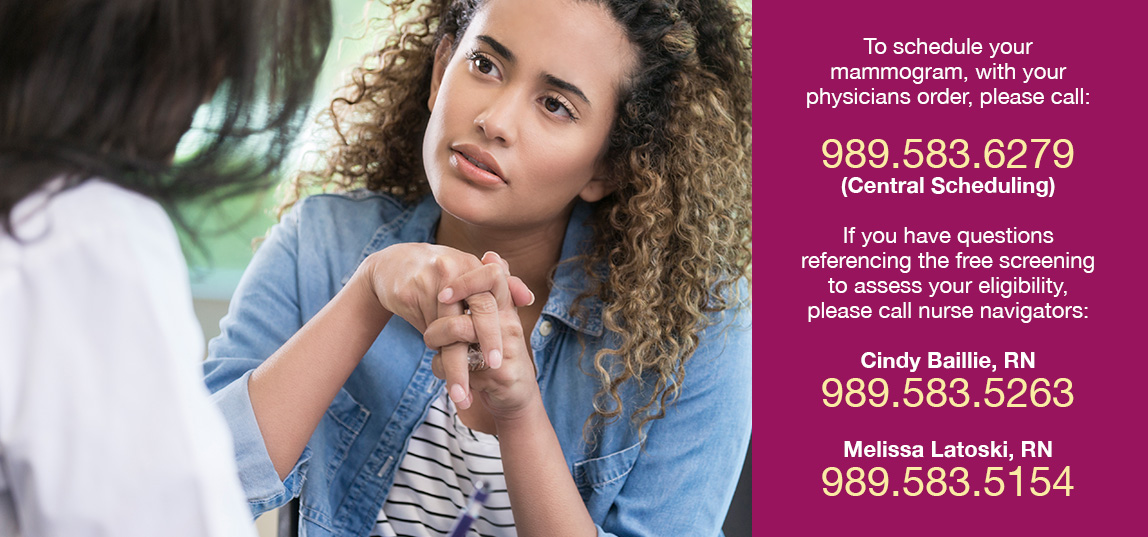When it comes to cancer, knowledge is power: Early detection significantly improves the chances of effectively treating breast cancer. The American College of Radiology recommends yearly mammograms for women 40 years of age and older.
If you’ve recently turned 40, or if you’re older and have put off getting a mammogram, it’s time to get screened. The Covenant Breast Health Center offers a full range of the latest diagnostic tests for breast cancer.

If you do not have a physician, Find a Physician now.
Here’s what to expect at your breast screening appointment.
3D mammogram
- Most patients at average risk for breast cancer will have a 3D mammogram/breast tomosynthesis. This test takes multiple images of the breast in each position, which allows the images to be viewed layer by layer. Your 3D mammogram:
- Will take about 15-20 minutes
- Exposes you to a relatively small amount of radiation
- Is typically covered by insurance as a preventive benefit every 1-2 years for a woman age 40 and older without requiring copays, coinsurance or deductibles
- Is provided for free or at low cost by some state and local health programs and employers
Before your screening
You will be asked not to use antiperspirant/deodorant, perfume, lotion, cream, or ointment, so if you are uncomfortable going without, you may want to schedule your appointment first thing in the morning.
After checking in, you’ll be taken to a private changing area to remove your clothing from the waist up and change into a hospital gown. If you wear a two-piece outfit, you’ll only need to remove the top part of your clothing for the mammogram.
During your screening
The mammography machine features acrylic plates that will compress and immobilize your breasts (one at a time) for screening. You will stand in front of the machine and the technologist will help position your breast so that it rests on one plate, and a second plate will compress your breast so that images may be taken. The compression can be uncomfortable but lasts only a few seconds while the technologist takes the images. Once the technologist gets the images they need of both breasts, you can get dressed and check out.
After your screening: the results
The mammogram images will be shared with the doctor who prescribed the test. You should receive a letter in the mail within ten days, informing you of the results.
If the results are normal, you’re done until next year.
However, you may be called back for follow-up exams. A call for a follow-up appointment does not necessarily mean you have cancer, especially after your first mammogram. Your initial screening may reveal “suspicious” findings only because your doctors have no previous images to compare them to. Many times, extra views are needed because parts of the images were unclear and need further evaluation.